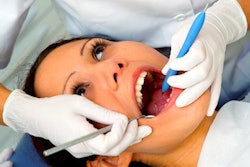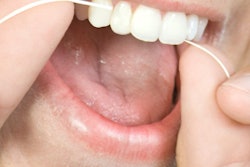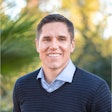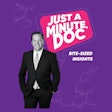
Medicaid dental program reform in Virginia resulted in a sharp rise in provider participation and spurred more dentists to work for dental service organizations (DSOs). The findings were published August 26 in the Journal of the American Dental Association.
This is believed to be one of the first studies to investigate the evolving profile of the dental practice environment using a government-sponsored insurance program's claims data, the authors wrote.
"Medicaid reform has resulted in a significant increase in provider participation and growth of DSO-affiliated providers," wrote the group, led by Dr. Tegwyn Brickhouse, PhD, professor and chair of the department of dental public health and policy at the Virginia Commonwealth University School of Dentistry in Richmond.
To assess the impact of state Medicaid reform on the dental practice environment, researchers examined provider activities and practice settings. The retrospective study explored more than 13 million dental claims filed for children under the Virginia Medicaid program. These claims were filed by state dental providers during fiscal years 2003-2011, encompassing the time before and after the program was reformed in fiscal year 2006. The provider practice settings of private practices, DSOs, and safety-net practices were independent variables. Safety-net practices included county and local clinics and university-based clinics.
Prior to Virginia reforming its Medicaid program, providers in all settings experienced programmatic barriers to participation, including low reimbursement rates, preauthorizations, complicated filing processes, and limited coverage for procedures. Since the state initiated its Medicaid reform, many of these hurdles have become more manageable.
Under its revamped program, the single-payer model was reformed, which resulted in higher provider reimbursement rates. Though it appears changes to state dental Medicaid programs have affected how dental services are delivered to low-income individuals, it has not been clear what new practice setting models have been created to meet the needs of those who were previously not insured, according to the study.
Once changes had been made to the Medicaid program in Virginia, provider participation, including the number of patients they saw and the payments they received, increased among dentists in all practice settings. By the end of the postreform maturation period, dentists in DSO settings dramatically penetrated the area in terms of the number of patients they treated, as well as the payments they received, in comparison to those in private and safety-net practices, they wrote.
| No. of annual Medicaid patients per dental provider (2003-2011) | |||
| Provider type | No. of patients during prereform (2003-2005) | No. of patients during implementation (2006-2008) | No. of patients during postreform (2009-2011) |
| DSO | 118.2 | 376.8 | 633.6 |
| Private practice | 186.8 | 213 | 216.7 |
| Safety net practice | 177.8 | 258.4 | 272.4 |
| Total Medicaid payments per dental provider type (2003-2011) | |||
| Provider type | Payments received during prereform (2003-2005) | Payments received during implementation (2006-2008) | Payments received during postreform (2009-2011) |
| DSO | $15,533 | $88,688 | $121,173 |
| Private practice | $36,982 | $66,695 | $72,498 |
| Safety net practice | $31,560 | $59,548 | $66,249 |
Nevertheless, the study had limitations, including that there is no common classification of dental practices that are reported in the U.S., they wrote.
After Virginia reformed its Medicaid dental program, provider participation increased and led DSOs to expand to meet the needs of patients, the authors wrote.
"DSOs are a growing sector of the dental practice environment, and this study shows evidence of this growth specific to a state Medicaid dental program," Brickhouse and colleagues wrote.




















